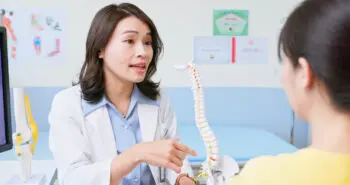Translational Research: From Bench to Bedside
Basic science lends to the conceptual understanding of complex subject matters in medicine. The field of medicine is dependent on applying knowledge of medical sciences such as anatomy, physiology, biochemistry, microbiology, pharmacology, and pathology to better understand disease at the cellular, tissue, organ, and biological system level. However, the foundation of this rigorous medical sciences subject matter finds its roots in biology and to a lesser extent, chemistry.
Most scientists and clinicians who are exploring the realms of clinical research are well-versed in the basic science. Basic science involves studying cell biology, biochemistry, microbiology, immunology, neurobiology, pharmacology, and genetics in organisms such as bacteria, mice, pigs, and humans.The application of basic science principles and concepts to address complex clinical research questions drives discovery in clinic. This application of basic science to clinic is called translational research. It is also commonly referred to as bench-to-bedside, i.e. laboratory to clinic.
The development of novel treatments, procedures, and technologies relies on tapping the wealth of knowledge that resides in the silos of basic sciences. It is the application of principles and concepts from basic science silos to the dynamic field of medicine that holds the key for finding cures for diseases, developing new treatments, and designing innovative medical technologies. Most scientific investigations to understand the underlying disease mechanism can be effectively had by unraveling the basic science behind it.
Application of basic science concepts in the laboratory setting or outside the human body is called in vitro and is part of the translational research spectrum. The translational research spectrum encompasses application of bench or laboratory findings to benefit patients in clinic. Lately, another arch of the spectrum has extended the translational to the community by disseminating the information to the patients through clinicians and public health officials. One such field that is making a huge impact on translational research is stem cells. Rather than construct grandeur content on stem cell treatments as the panacea, I would like to take the path less taken. I would like to provide the translational research aspect of stem cells that makes them such a great candidate for regenerative medicine.
Fourteen years ago, while working with a prominent stem cell researcher, Dr. Steve Stice, at the University of Georgia, I learned to truly appreciate the meaning of taking stem cells from the bench-side and finding applications for them in clinic. Dr. Stice has been on the forefront of stem cell research. Among his many accomplishments, he produced the world’s first cloned rabbit in 1989. In 2001, his lab produced the world’s first human embryonic stem cells derived from discarded embryos.
In 2005, Dr. Stice further enhanced the field of regenerative medicine by collaborating with Dr. Zhang from the University of Wisconsin to develop humanmotor neurons from embryonic stem cells. In 2012, his lab created revolutionary “fracture putty” that can heal bone fractures in days rather than months. The last two examples demonstrate the translation of basic science to clinic.
Dr. Stice and other researchers like him have a solid understanding of stem cell biology that enables them to eventually apply that knowledge to clinic in collaboration with clinicians. The basic science knowledge of stem cells by itself is an island; once the concepts and mechanisms behind the science find applications in clinic, it opens up avenues for developing treatments. In the words of Dr. Stice:
“There are multiple diseases that could be benefited through the use of stem cell technology. Stem cells could be differentiated into specific cell types and offer a source of replacement cells from damaged tissues. Some of these diseases include Alzheimer’s disease, Parkinson’s disease, ALS, spinal cord injury, retinal disease, stroke, heart disease, diabetes, and fracture repair. Curing these diseases and injuries would be very exciting; however, intensive research still needs to be performed to make sure that the therapies are safe and effective in human patients.”
Dr. Stice’s lab finding on the bone regeneration process through “fracture putty” is basic science research performed on mice. The lab used adult stem cells capable of producing protein involved in bone healing and generation. In collaboration with Dr. Peroni, they inserted the putty using a stabilizing device into fractures in mice. In an effort to translate this treatment into humans, the next step in this research is to conduct this study in large animals. Once a large animal model is established for healing fractures using the stem cell gel mixture, then it can be translated into clinical studies.
In the grand scheme of things in the clinical research world, minus the million-dollar budgets required for clinical trials, basic science is at work behind the scenes. As is the case with basic science research, with a budget of just a few thousand dollars per project, scientists are busy furthering the application of basic science findings to the clinic, including spinal surgery. Clinical studies including clinical trials are an expensive proposition and can cost millions of dollars for testing the safety and efficacy of drugs and devices including stem cell-derived regenerative medicine for use in humans.
A report submitted by the Eastern Research Group, Inc. to the Department of Health and Human Services in 2014 determined that it now costs between $161 million and $2 billion and about 7.5 years to bring a new drug to market.2 The high financial cost and lengthy timelines puts the pressure back on the basic science to have highly applicable findings that can be translated into clinic. The basic science research costs are a fraction of the clinical trials. A study by Light et al. showed that in 2003 the gross cost for an FDA-approved drug was $7.6 million for animal studies, while the Phase I, II, and III of a clinical trial was $70.7 million, $77.6 million, and $126 million, respectively.3 The cost-ratio of conducting clinical research to bench research in animals is lopsided.
Stem cells’ applications in spine have advanced rapidly in the last few decades. According to Orthopedics This Week, around one million patients in the US were treated with stem cell-based therapies in the 15 years preceding the start of 2012. Furthermore, the article reports that in 2012, 100,000 patients were recipients of these stem cell therapies. Spine surgeons, along with ophthalmologists and wound care physicians, were the most frequent users of stem cell therapies.4 The article attributes the strong adoption of stem cells therapies by spine surgeons to their use of Infuse Bone Graft (commonly called BMP, bone morphogenetic protein, a genetically engineered version of a protein found naturally in everyone’s body that helps regulate bone growth and healing) and allograft. The fact that spine surgeons have had experience using regenerative therapies as alternate treatments in their practices provides the rationale for increased use of stem cells in spine practices across the country.
By Furqan U. Haq, PhD



